Vatha Kuazhambu has to be the most beloved recipe in our family and this Mullangi Vatha Kuzhambu tops the list. My mother made the best Vatha kuzhambu in the whole world.
Growing up vatha kuzhambu made with radish used to be my favorite and now it is the same with my boys. Anytime, I ask them what kuzhambu to make, the immediate answer would be radish kuzhambu.
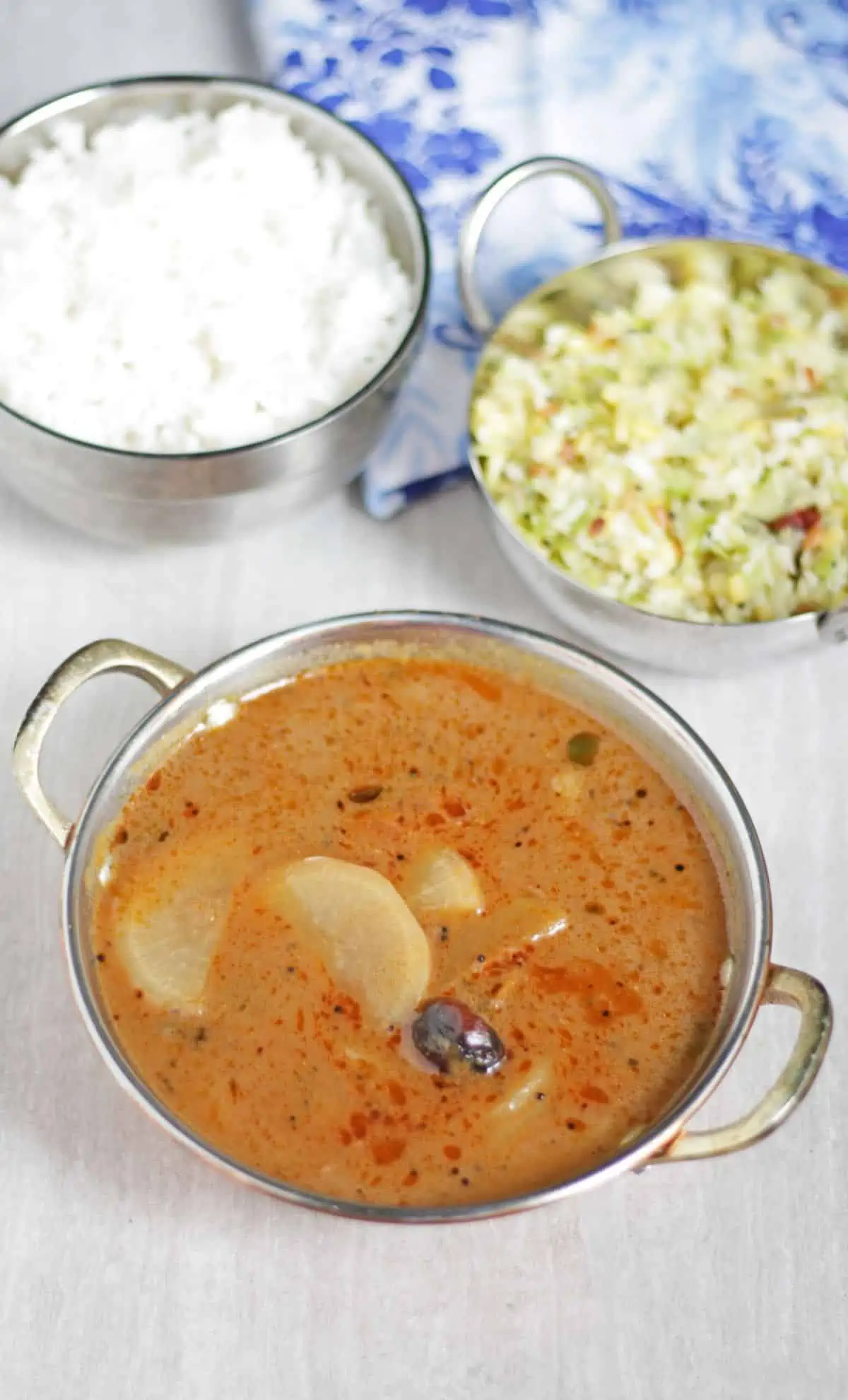
Table of contents
We love mullangi/radish and use it very often at home. We even grow our own radish but I hardly use that to make kuzhambu. The homegrown radish is so tender that it is often eaten as a salad.
My mother developed the boy's taste buds into liking vathal kuzhambu. She would make so many different kinds and just like how her Pulikaachal is so popular, her vatha kuzhambu recipe is a keeper as well.
What is Kuzhambu?
Growing up, we always called the tamarind-based stews as vatha kuzhambu or just kuzhambu. As I made my way into the blogging world, I slowly started expanding my culinary search. So, according to my dictionary, I would call something a puli kuzhambu or kara kuzhambu if it has onion or garlic in it. A perfect example would be this Kathrikkai Kara Kuzhambu.
The rest of it all is called kuzhambu. There are many different kinds of kuzhambu. The most fun one is the 'iru puli kuzhambu' which literally translates into a kuzhambu with twice the pulippu aka sourness.
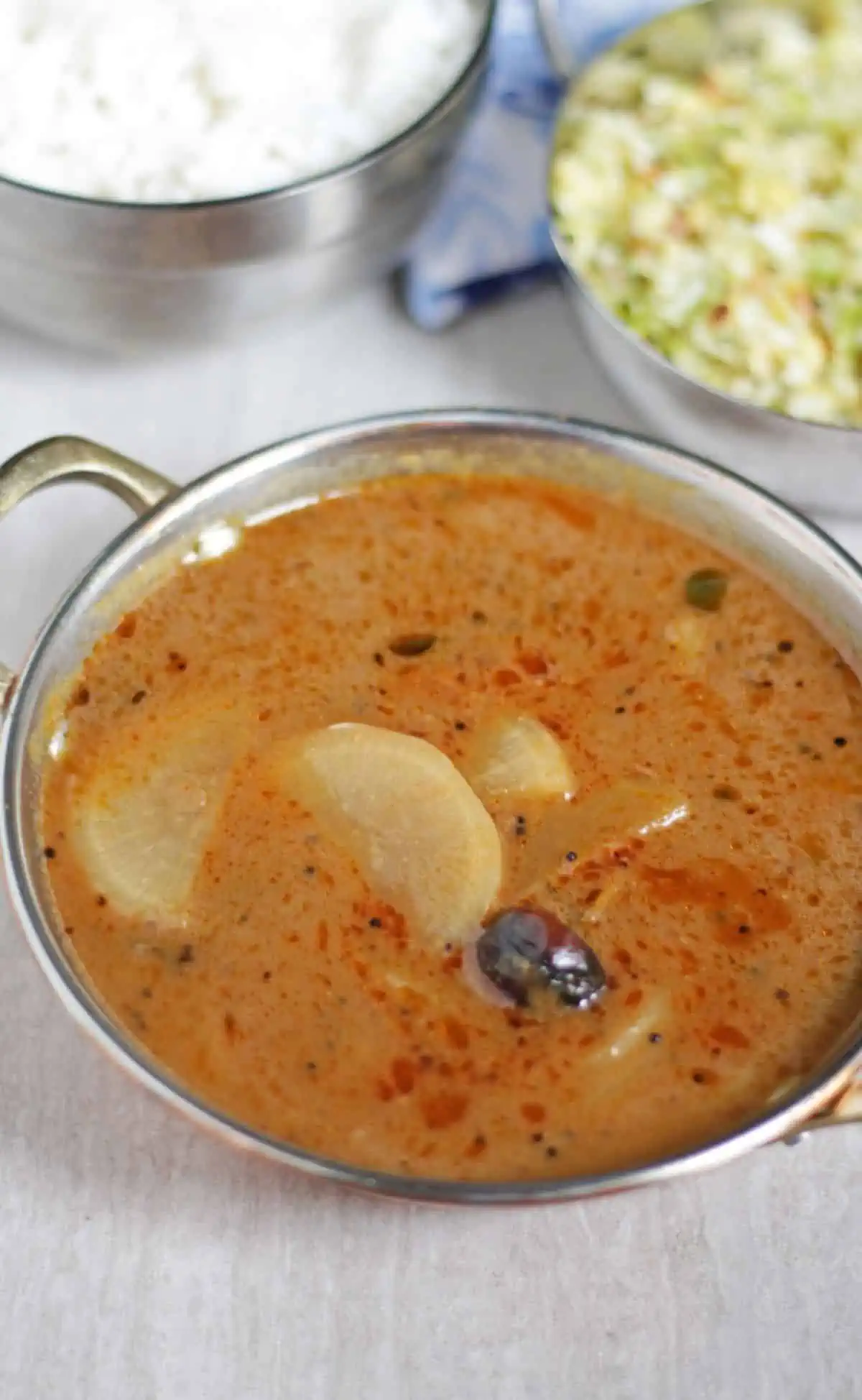
Then there is the famous Mor Kuzhambu out of which the Paruppu urundai more kuzhambu is the most sought in our house.
Then comes the Poricha kuzhambu which has a ground spice mixture and paruppu/lentil. Like this Podalangai Poricha kuzhambu or Mixed vegetable poricha kuzhambu.
And I am saving the last two of our favorites for the last. Milagu kuzhambu, one more of my mother's signature recipes, and our newfound love, Chettinad Paruppu Urundai kuzhambu.
If you are not yet bored with different kinds of kuzhambu, here are a few more different Vatha Kuzhambu that I make.
Parangikai (Pumpkin) Vatha Kuzhambu
I make Mullangi Vatha Kuzhambu almost once a month. I am surprised I didn't blog about it yet. But here it is now!
Try the recipe when you get fresh mullangi / mooli next time.
Ingredients needed
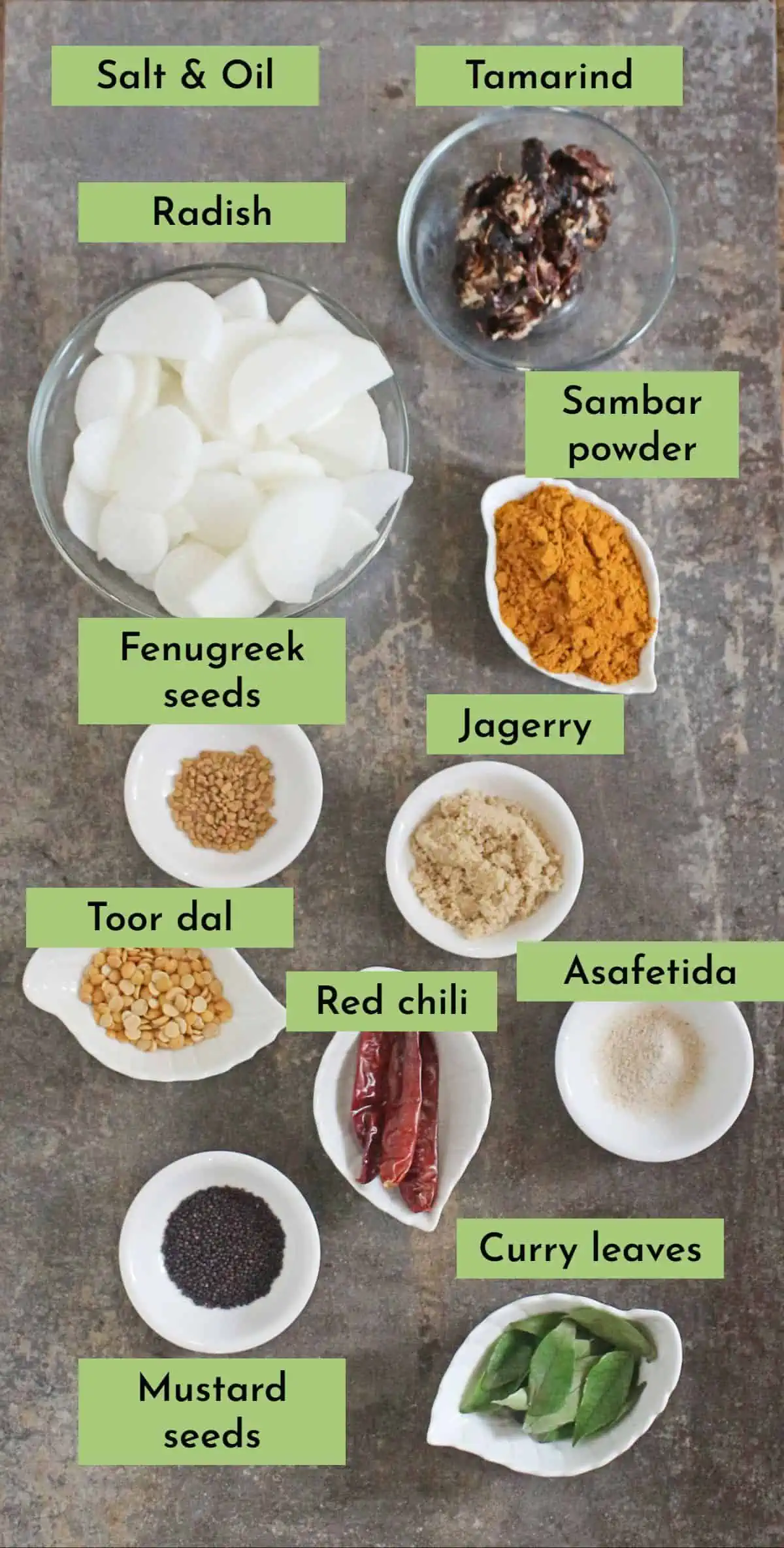
Check the recipe card at the bottom of the page for exact measurements and printable detailed recipes.
Tamarind / Puli - I like to use dried tamarind especially to make the vathal kuzhambu. If you don't have this, then use the tamarind paste.
Mullangi / radish - I use the white long Indian radish to make kuzhambu. It is also called the Daikon.
Sambar powder - I bring sambar powder from India as my family makes it fresh at home. We can also use store-bought sambar powder.
Seasoning - We will be using mustard seeds, toor dal, dry red chilies, fenugreek seeds/methi, asafoetida, and curry leaves.
Oil - I like to use gingelly oil or Indian sesame oil to make vatha kuzhambu. The kuzhambu is very flavorful when cooked in gingelly oil. We could substitute it with any other cooking oil as well.
Jaggery - My grandmother and mother would always use a little bit of jaggery/brown sugar when making something acidic. Again, this can be skipped.
Salt
Step-by-step process
If using dry tamarind, soak it in 2 cups of hot water for 15 to 20 minutes and then squeeze out the juice. Now add a cup more hot water and squeeze the remaining juice from the tamarind. Soaking the tamarind is important to soften it.
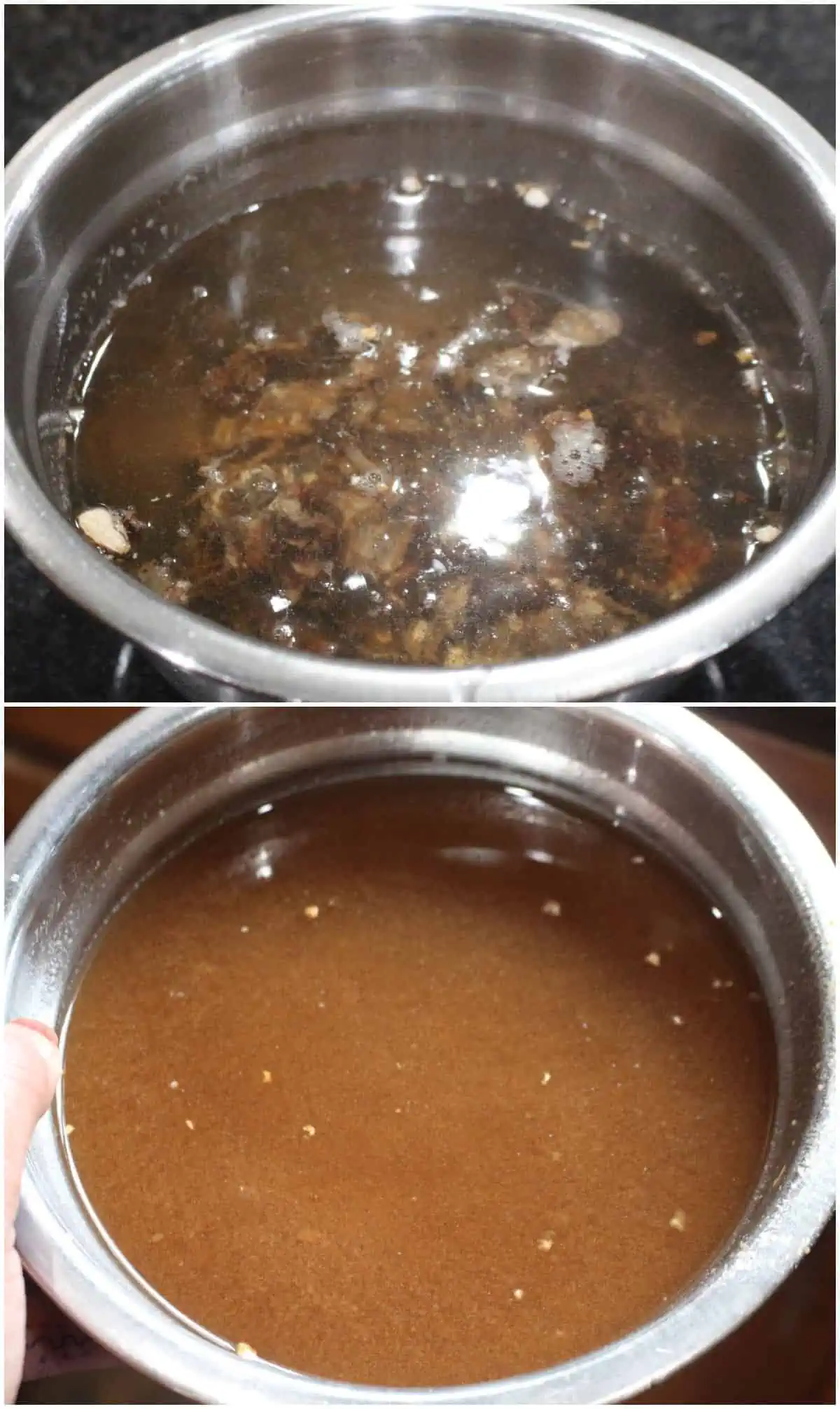
Wash and peel the daikon/radish and slice it into thin roundels. If the radish is too thick, we can slice it vertically and then slice it into semi-circles.
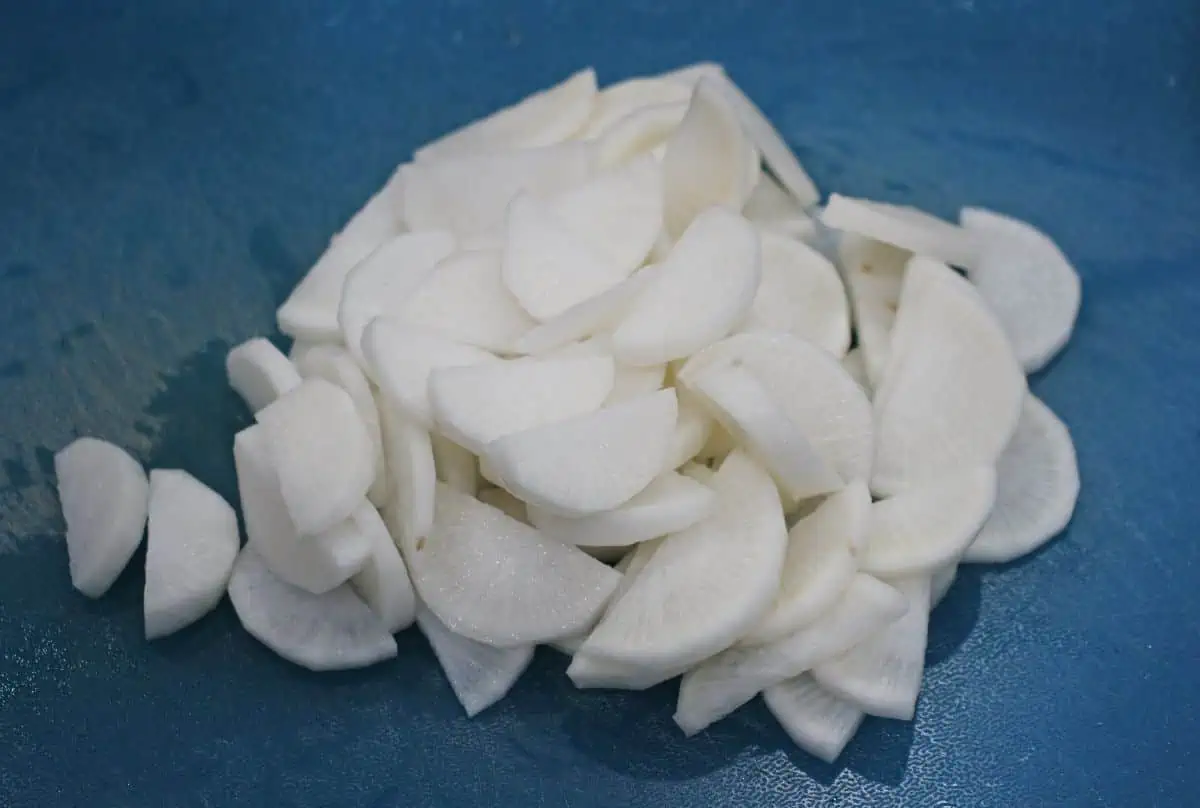
Heat a heavy bottom pan and add the oil. Once the oil heats up, add the seasoning ingredients - mustard seeds, toor dal/tuvaram paruppu, red chilies, methi seeds, and asafoetida.
Now add the chopped radish and let it saute for a couple of minutes.
Next, add the sambar powder and mix well.
Add the extracted tamarind juice and mix well.
Add the salt needed and the curry leaves and let the kuzhambu come to a boil.
Now simmer the vatha kuzhambu and let it cook until the radish is cooked.
Further, allow the vatha kuzhambu to thicken to desired consistency.
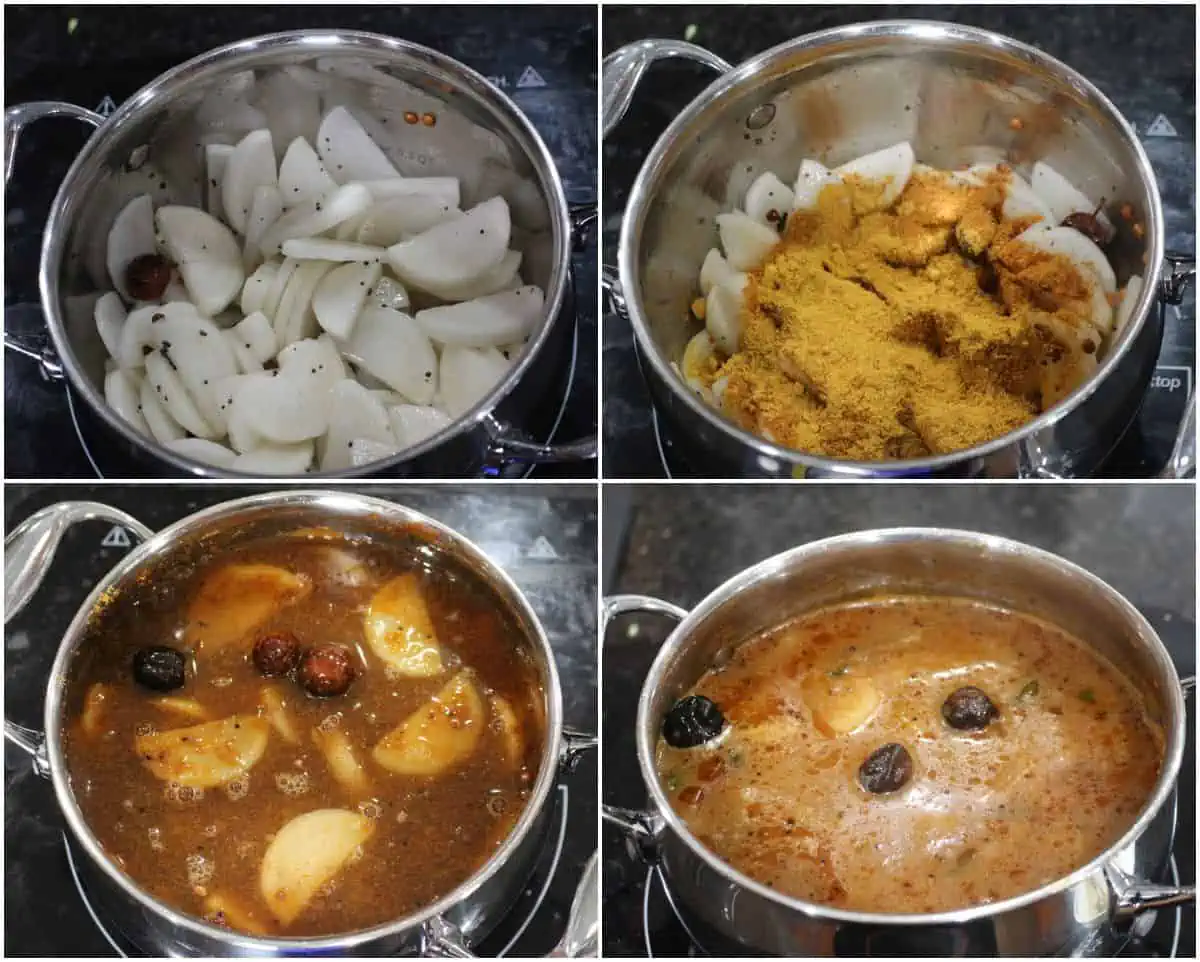
If the vatha kuzhambu does not thicken enough, dissolve a teaspoon of rice flour in 2 tablespoons of water and add it to the boiling kuzhambu and stir well. This will help to thicken the kuzhambu.
In the end, add the jaggery if using.
Turn off the flame and serve the vatha kuzhambu over hot rice and mix it adding a good drizzle of ghee.
How to serve?
Mullangi Vatha kuzhambu is best when mixed with hot rice and a good drizzle of ghee. I also like to add some cooked lentils when mixing.
Since Vatha kuzhambu is spicy, I like to pair it with some mild poriyal or curry. My favorite would be beans curry with coconut or beetroot curry. My son loves it with kovakkai curry or okra/vendakkai curry
Also, it is a good idea to pair it with some mild kootu like this parangikai pal kootu or poosinikkai mor kootu.
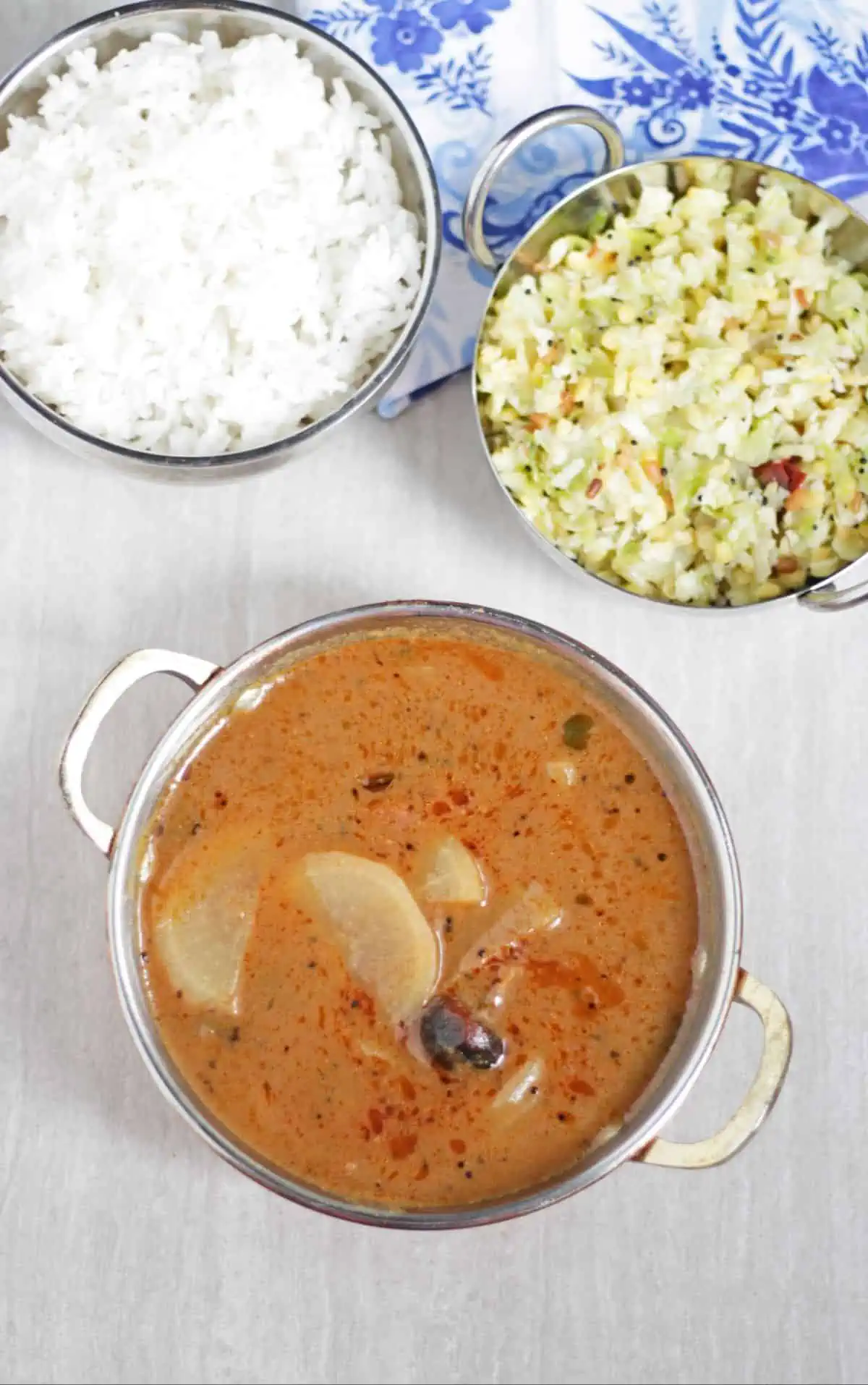
Expert tips
- I would highly recommend using dry tamarind to make radish vatha kuzhambu.
- Use good quality sambar powder for the best flavor.
- We could use other vegetables like eggplant, okra, drumstick, bell pepper, and so on to make vatha kuzhambu.
- Use rice flour dissolved in water to thicken the mullangi vatha kuzhambu. If adding rice flour, make sure to cook the kuzhambu for the raw flavor to disappear.
How to store Vatha Kuzhambu
Vatha kuzhambu has a very good shelf life. It can remain outside for a day or so and then can be refrigerated for up to a week. Heat it thoroughly before serving.
Because of its longer shelf life, vathal kuzhambu is a wonderful choice to carry on a road trip. I have memories of amma bringing curd rice and vatha kuzhambu when we traveled by train.
Frequently asked questions
Yes, we can add okra, eggplant, onion, bell pepper, and so on to make vatha kuzhambu.
Dissolve a teaspoon of rice flour in about 2 tablespoons of water and add it to the boiling kuzhambu. Continue cooking it and you will notice that the kuzhambu will thicken.
More mullangi/radish recipes
If you made this recipe and liked it, give a star rating on the recipe card or let me know in the comments below. You could also share it with me on Instagram using #MyCookingJourney and tagging me @sandhya.ramakrishnan. You could follow me and my recipes on Facebook |Instagram | Pinterest | twitter
Recipe Card
Recipe
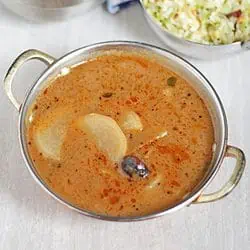
Mullangi Vatha Kuzhambu | Radish Kuzhambu
Equipment
- Heavy bottom pot
- Cutting board
- Knife
Ingredients
- 2 Tablespoon Tamarind ball Small orange sized piece. If using pulp, about 1 Tablespoon of pulp
- 1 ½ cups Mullangi / white radish / daikon sliced in circles
- 3 Tablespoon Gingelly oil
- 1 teaspoon Mustard seeds / kadugu
- 2 teaspoon Toor dal / tuvaram paruppu
- 3 Red chilies
- ½ teaspoon Fenugreek Seeds / Methidana
- ¼ teaspoon Asafetida
- few Curry leaves
- 3 Tablespoon Sambar powder
- 1 teaspoon Rice flour optional
- as needed Salt
- 1 teaspoon Jaggery optional
Instructions
- If using dry tamarind, soak it in 2 cups of hot water for 15 to 20 minutes and then squeeze out the juice. Now add a cup more hot water and squeeze the remaining juice from the tamarind. Soaking the tamarind is important to soften it.
- Wash and peel the daikon/radish and slice it into thin roundels. If the radish is too thick, we can slice it vertically and then slice it into semi-circles.
- Heat a heavy bottom pan and add the oil. Once the oil heats up, add the seasoning ingredients - mustard seeds, toor dal/tuvaram paruppu, red chilies, methi seeds, and asafoetida.
- Now add the chopped radish and let it saute for a couple of minutes.
- Next, add the sambar powder and mix well.
- Add the extracted tamarind juice and mix well.
- Add the salt needed and the curry leaves and let the kuzhambu come to a boil.
- Now simmer the vatha kuzhambu and let it cook until the radish is cooked.
- Further, allow the vatha kuzhambu to thicken to desired consistency.
- If the vatha kuzhambu does not thicken enough, dissolve a teaspoon of rice flour in 2 tablespoons of water and add it to the boiling kuzhambu and stir well. This will help to thicken the kuzhambu.
- In the end, add the jaggery if using.
- Turn off the flame and serve the vatha kuzhambu over hot rice and mix it adding a good drizzl
Notes
- I would highly recommend using dry tamarind to make radish vatha kuzhambu.
- Use good quality sambar powder for the best flavor.
- We could use other vegetables like eggplant, okra, drumstick, bell pepper, and so on to make vatha kuzhambu.
- Use rice flour dissolved in water to thicken the mullangi vatha kuzhambu. If adding rice flour, make sure to cook the kuzhambu for the raw flavor to disappear.


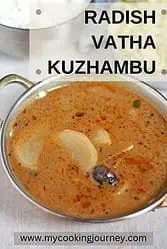
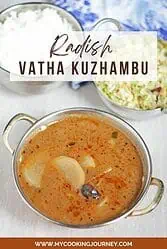

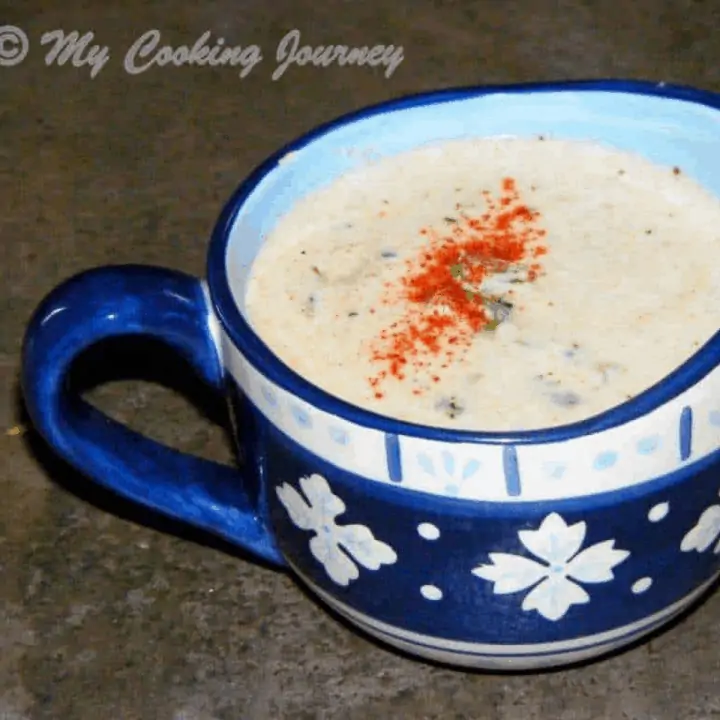
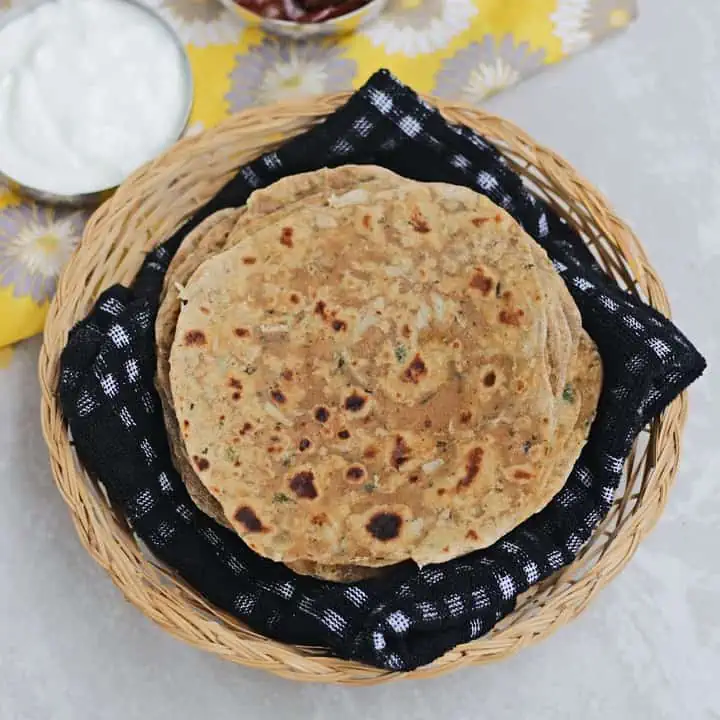
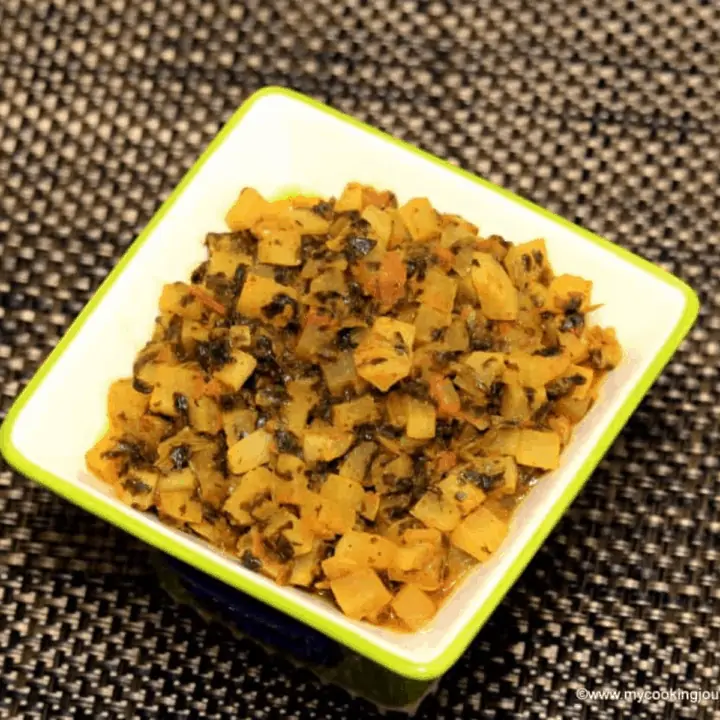
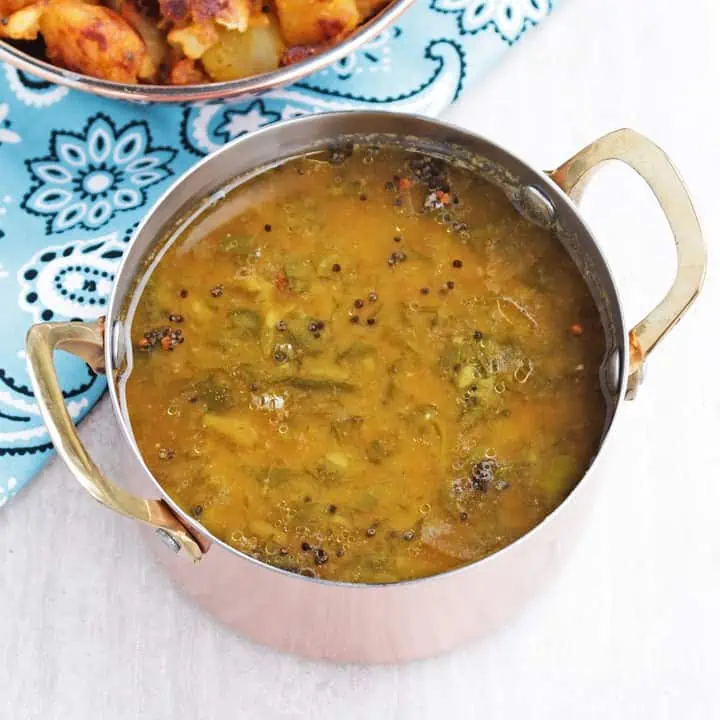
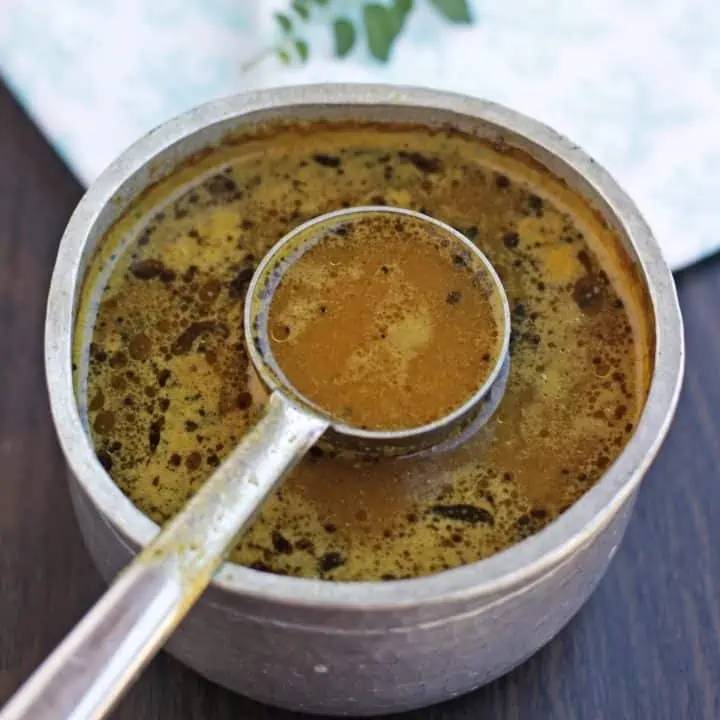
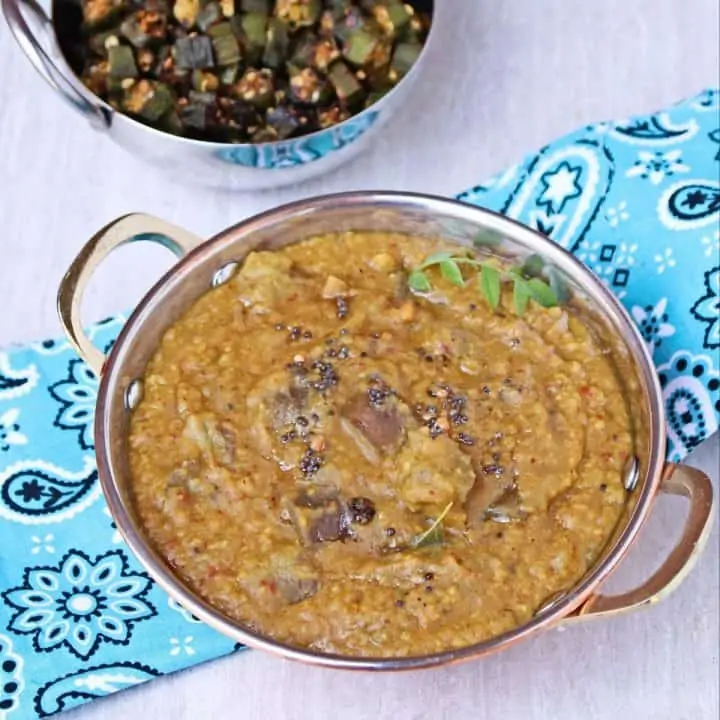
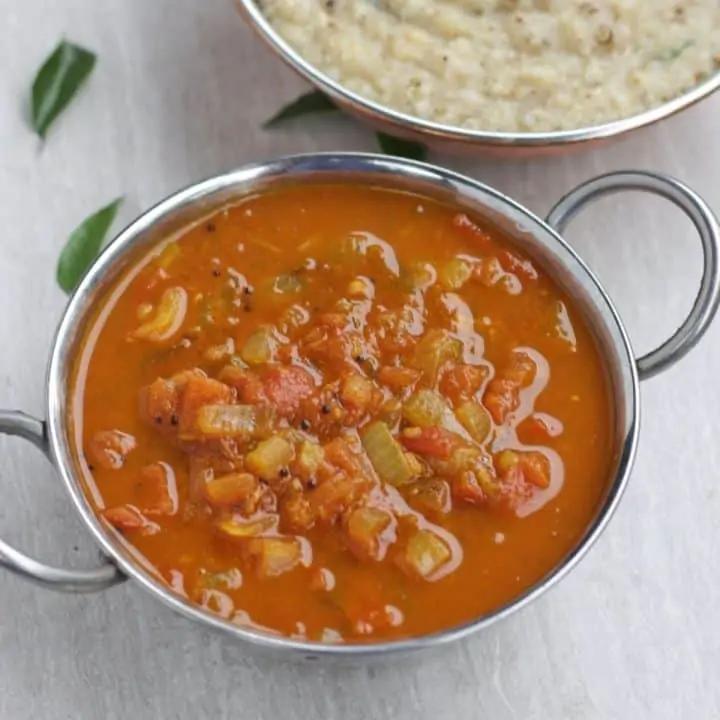
Karen says
Delicious! My sister sent me the link to this recipe and told me it was a MUST try ... she was right. It is delicious and pretty easy to make. The whole family loved it. Will make again.
Srividhya Gopalakrishnan says
I always end up making radish sambar. Radish vathal kuzhambu is a great idea. I will definitely try it out.
Radha says
Vathakuzhambu is our house favorite too. Plain, onion, or radish ones are the most often repeated ones. I too make it in the same way. The pictures make me hungry and I am making a point to make this kuzhambu tomorrow.
Priya Srinivasan says
aww vatha kuzhambu, name itself makes my mouth water sandhya! Vathakuzhamu and appalam is my favorite combo. Mullangi vathalkuzhambu looks delish and your mention about urundai kuzhambu, oh my more tempting !